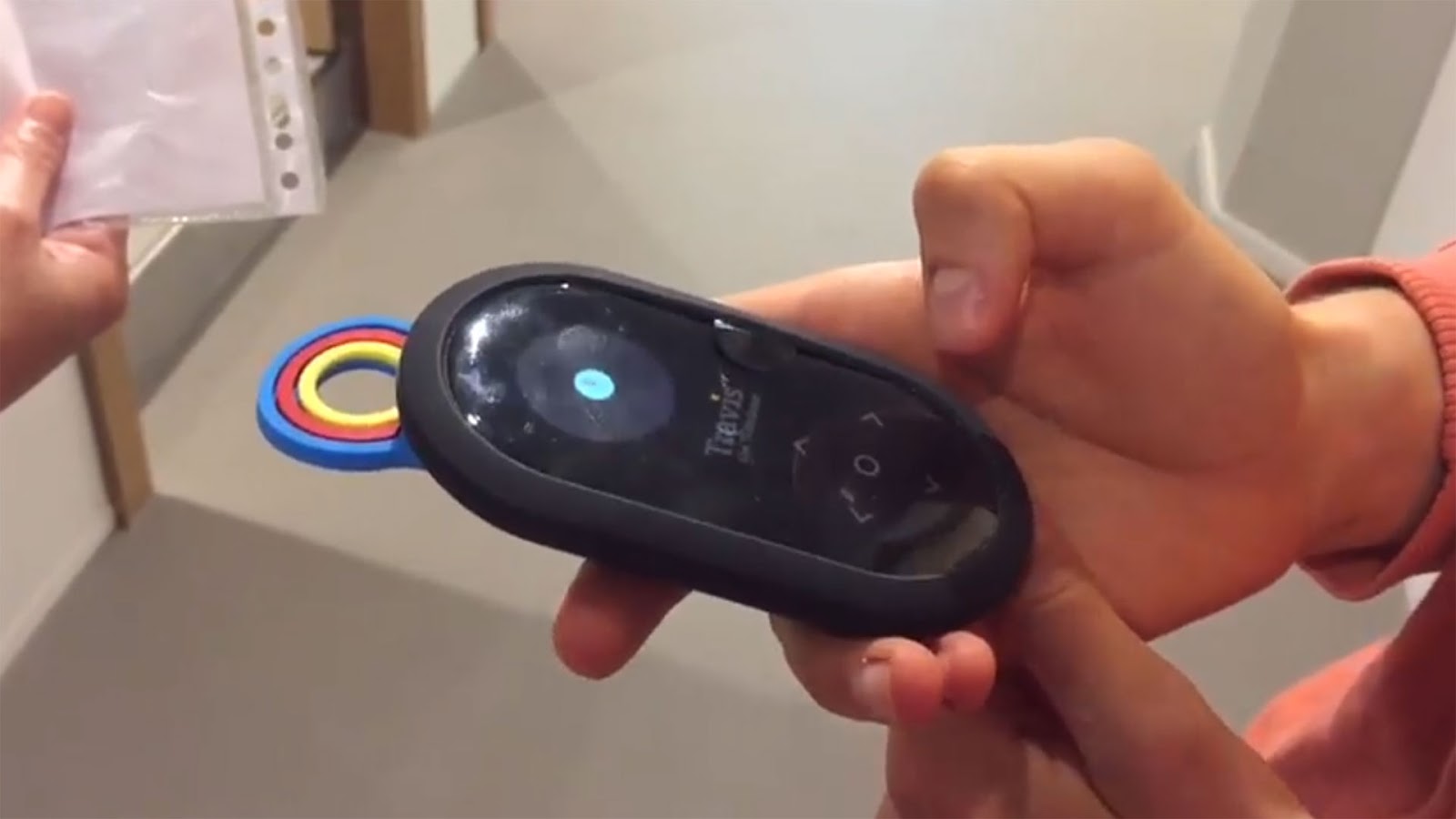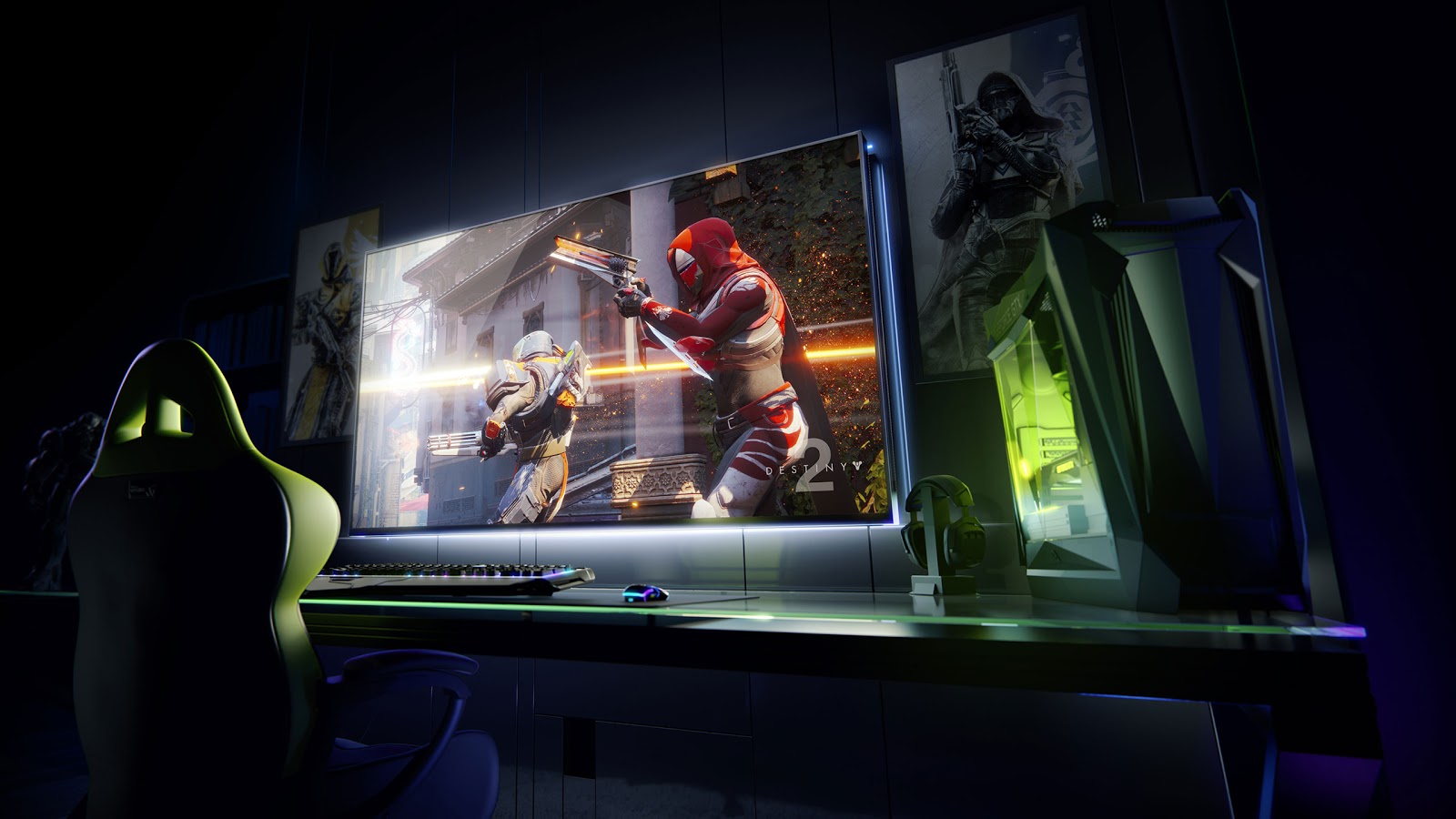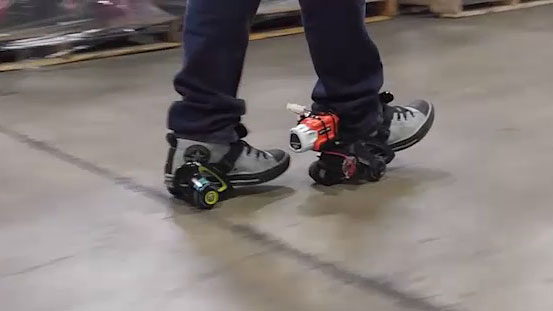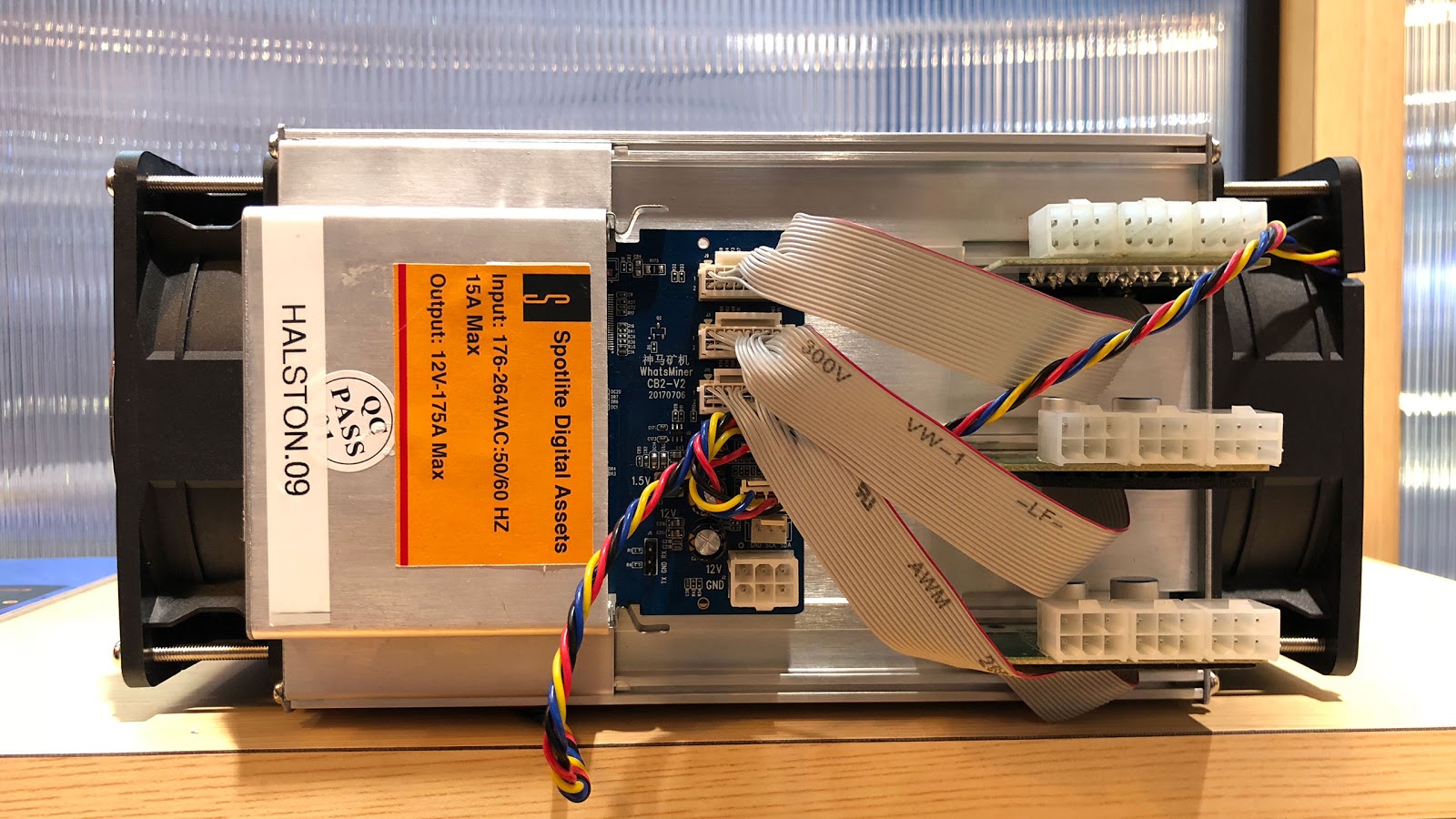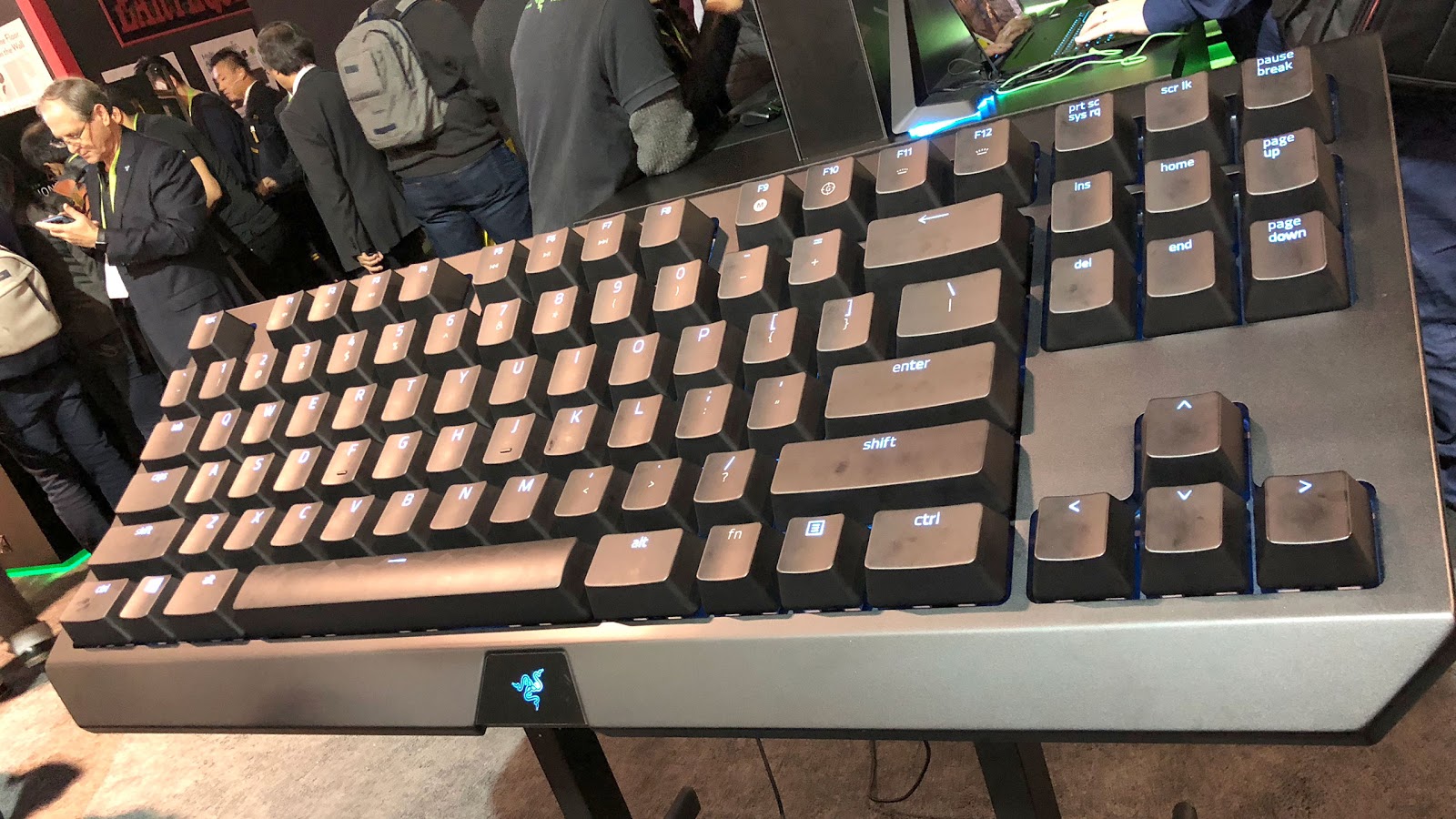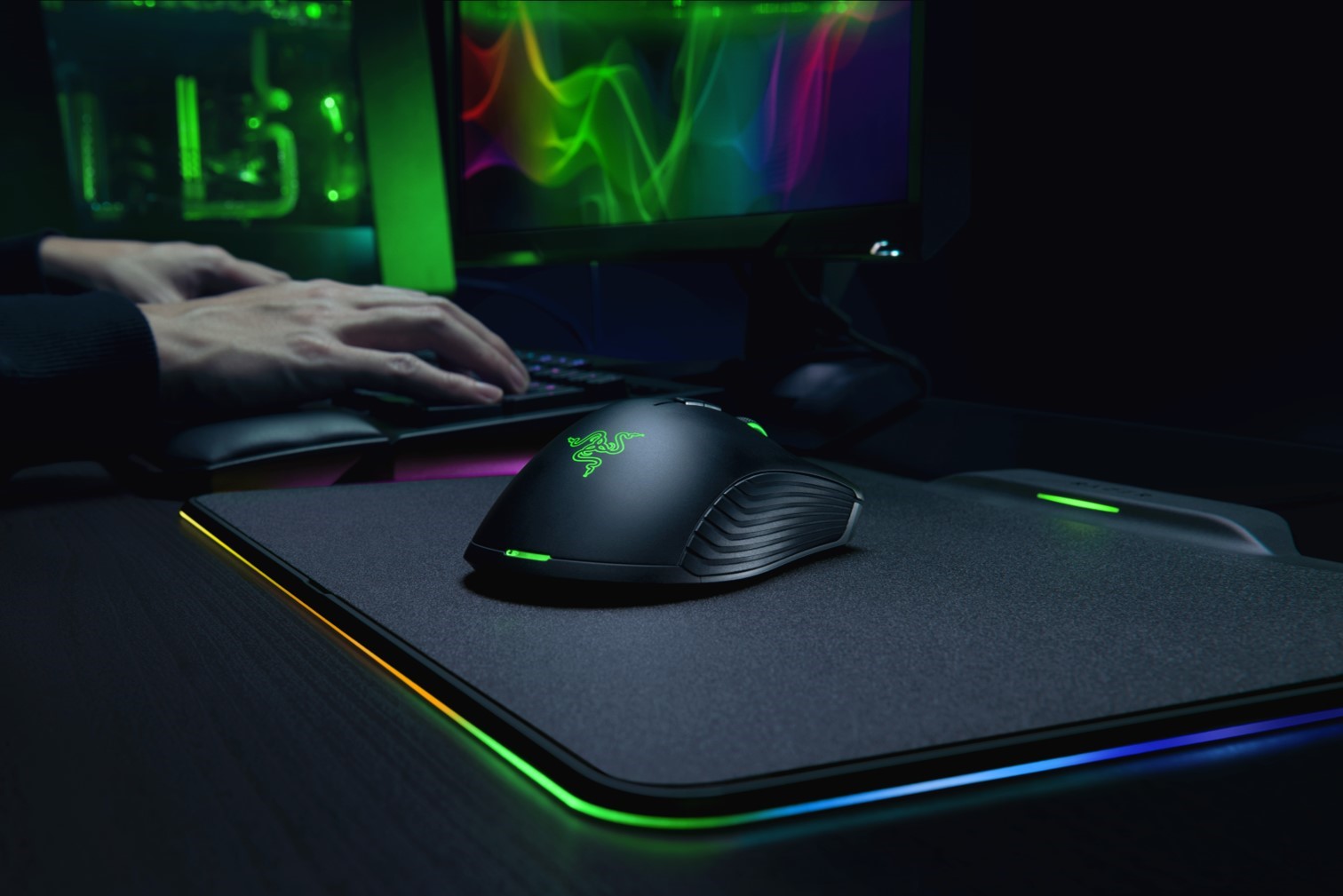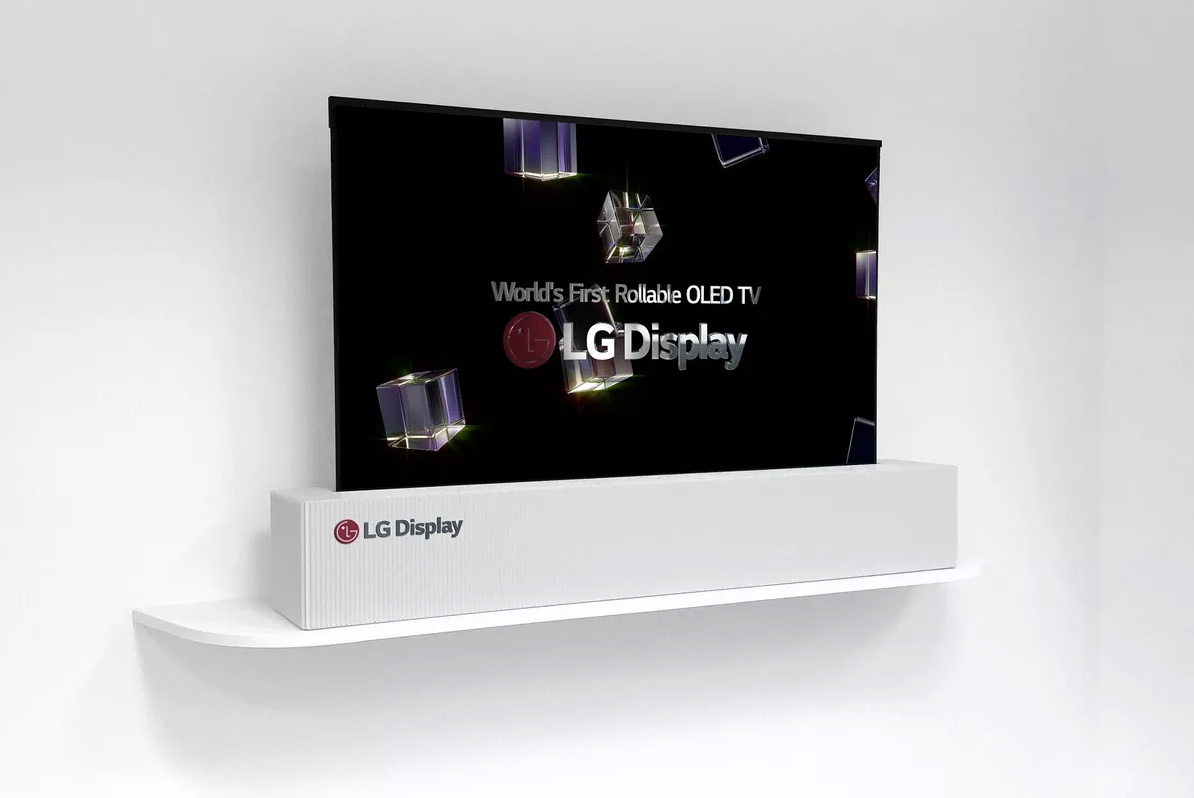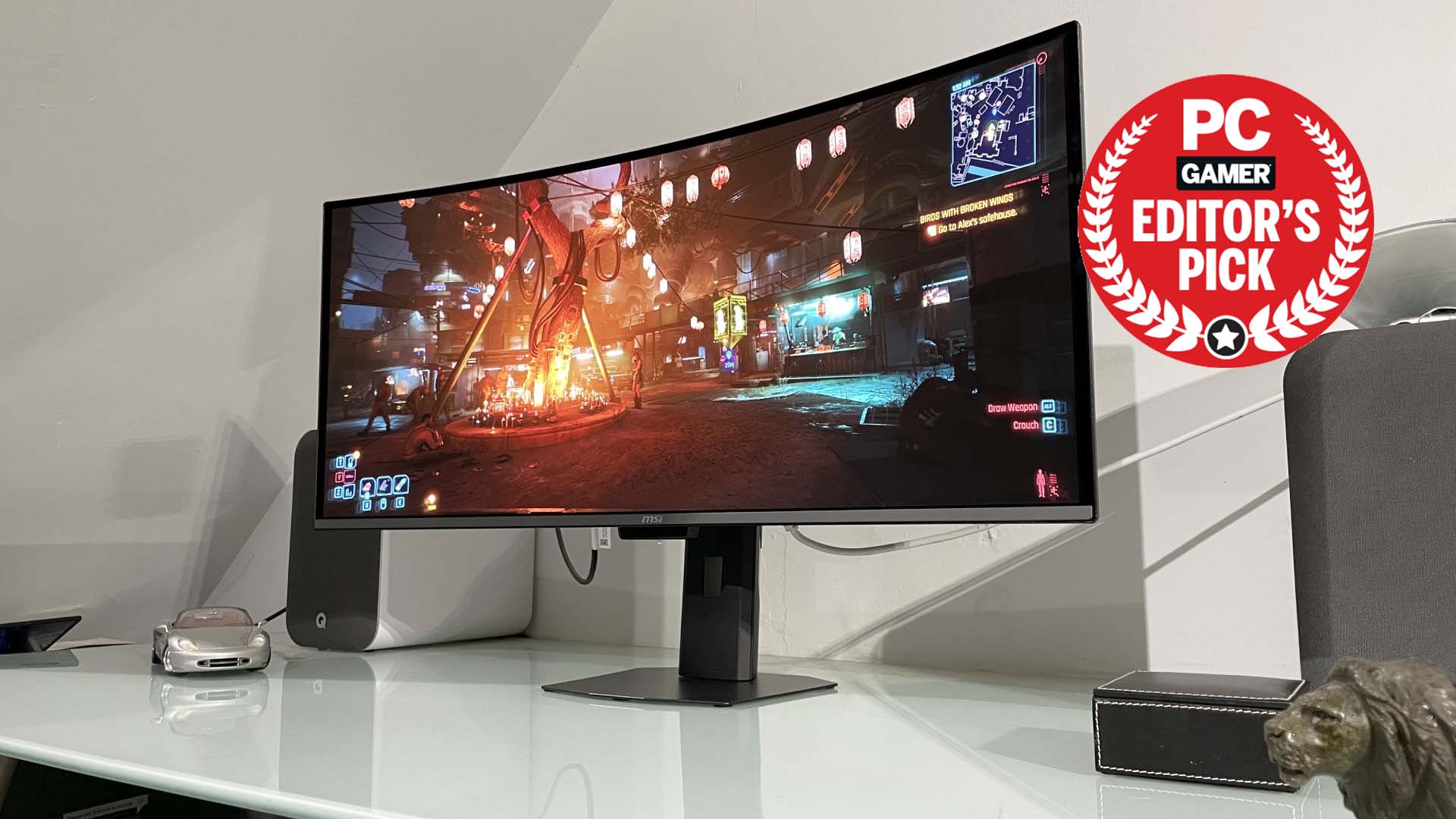The weirdest and craziest things we saw at this year's CES
From robots to clones to virtual reality, CES has something for everyone.
Breaking down language barriers: Travis the Translator
If you’re a fan of Star Trek and it’s universal translator, or maybe you prefer Hitchhiker’s Guide to the Galaxy’s babelfish, you’ll love Travis the Translator. It’s a palm-sized device that supports up to 80 languages (20 without an Internet connection), and it’s currently crowdfunded on indiegogo with a price of $199. I’ve used speech recognition in the past with Dragon NaturallySpeaking, and more recently I’ve been doing increasing amounts of talking to my phone. Using artificial intelligence and machine learning algorithms to support pseudo-real-time translation between languages is basically a done deal. Time to go on an exotic vacation to try it out.
Gaming in the living room, done properly: Nvidia BFGD
If there’s one drawback to using an HDTV as your gaming display, it’s the pitifully slow and archaic 60Hz refresh rate. Okay, so it’s not that bad, but once you fiddle with a 144Hz display with G-Sync for a while, going back to 60Hz feels like a big downgrade. I’d be happy with a large 1440p 144Hz HDTV, but no one makes those as it’s not a standard broadcast format, so instead Nvidia is skipping 1440p and going for a 4K 120Hz display, what it calls the Big Format Gaming Display, or BFGD. We got to see BFGD in action, and it looks like a great upgrade to the living room. Just beware that 120Hz G-Sync will require a direct connection to the display (no receiver pass-through), and G-Sync isn’t supported on the HDMI connections
Dumbest way to break your neck: Razor Turbo Jetts
I remember roller skating back in the 80s as a way to try and meet girls, because that’s what my friends and I did in middle school. (Don’t judge!) I was never a talented skater by any stretch, but I could get around the floor okay. Flash forward 25 years and I discovered that falling down while wearing roller skates hurts. It hurts a lot. So imagine my horror when I saw at Razor’s new Turbo Jetts, which are powered skates of a sort that can zip along at around 10 MPH for 30 minutes. That’s assuming you don’t fall on your ass and break your neck.
CES has brought us all sorts of novel ideas for getting around over the years, like the Segway. Do I need to mention the Segway ended up killing its maker? And yes, Segway is still around, showing off its new Loomo robot / personal transport this year. But I feel like I’m far less likely to kill myself riding a Segway, so kudos to Razor for making something that my kids will probably love, and which will be the death of me.
Keep up to date with the most important stories and the best deals, as picked by the PC Gamer team.
World's thinnest laptop: Acer Swift 7
Laptops have been getting thinner and thinner, but I think it'll be tough for anyone to best Acer's new Swift 7. You may remember Acer for sending us the ridiculously huge Predator 21 X, which shipped in a box so big that we fit Tuan inside it. This is the other end of the spectrum. The Swift 7 isn't exactly meant for gaming, but it's also only 8.98mm thick. For those counting, that's just barely a millimeter thicker than the iPhone X. Now to just fit a GTX 1080 in there…
Worst way to get to CES: Electron Wheel (in the winter)
Fun fact: I (Jarred) have ridden the STP cycling classic three times. That’s Seattle to Portland, about 205 miles, and I did it in one day each time. It’s brutal, and every time I’ve done it I tell myself I’m not doing it again. And then someone claiming to be my friend comes along and convinces me to give it another go. The thing is, I like cycling, particularly in nice summer weather. Riding 2,800 miles across the US from New York to Las Vegas in late December and early January, on the other hand, is flat out insane!
But Max Lippe did exactly that this year, as a promotion for the new generation Electron Wheel with Google Assistant. He averaged 280 miles per day over ten days. And now I’m sitting here thinking, if I had one of those wheels on my ride, doing the STP again might not be so bad. Sure, hanging out in the saddle all day can be a bit of a drag, but at least the uphill portions wouldn’t suck all the life from my legs.
The Electron Wheel Gen 2 is currently on presale for only $799, and it installs in seconds on any compatible bike. It has a max (powered) speed of 20 MPH and a range of 50 miles. It auto-senses hills and pedaling as well, assisting as you need it. That price might seem steep, but a good roadie can easily cost over $2,000, though all your cycling friends will probably laugh at your need for assistance. I say laugh away, I still want to try one!
I’m my own best friend: Netflix’s Altered Carbon stunt
When Tuan told me some booth was claiming to do personalized clones and then upload your consciousness into the cloud, I thought something seemed a bit fishy. Then he sent pictures and I wanted to know why they had such fugly mannequins instead of a working clone. Turns out it’s all just a big publicity stunt for the Altered Carbon Netflix series. But it was delivered in a somewhat believable fashion, and as time ticks on the idea of downloading my brain into a younger body certainly has some appeal. Let’s hope the AI singularity makes it happen before I kick the bucket. And maybe I can come back as a woman?
Worst way to pick up after yourself: Aeolus robot
Is anyone else here old enough to remember the Jetsons and Rosie the robot? As a kid, I dreamed of having a robot that would take care of all the household chores. We’re nowhere near that level of technology, sadly, and judging by Aeolus it’s still going to be a while. I have a little Neato Robotics vacuum that does a fairly decent job of navigating my downstairs, provided I pick up anything that might get in its way first, but while convenient I have to admit that it’s far slower than vacuuming myself, and it doesn’t always do a perfect job. Watching Aeolus at work at CES, it’s the same story. It could pick up a can of soda and hand it to you, which is cool, but more complex tasks like picking up after my kids might take all night judging by the way it moves. And I’m a little worried that the robot will just short itself out trying to do dishes. Maybe next year?
We will not go gently into the CryptoNight: Kodak KashMiner
Film is basically dead, or at least it’s on life support. So what’s the next step for Kodak? Going digital, cryptocurrency style. Kodak is hopping on the blockchain bandwagon, with a new KodakCoin that will be used to facilitate payments of the future KodakOne image rights management platform. That idea might actually work, though I’m not sure why we need a brand new cryptocurrency for this purpose. But Kodak’s grab for cash with it’s KashMiner 2-year rental agreement is a different matter.
This is an AntMiner S9, with a Spotlite Digital Assets sticker slapped on it. You can rent one for two years, during which time half of all the Bitcoin it generates will be yours to keep. The other half goes to Kodak, who will manage the hardware, pay for electricity, and other details. You might end up making about $9,000 off the investment, according to current projections, but those projections are basically a shot in the dark. If you believe in cryptocurrency and want to get into mining, do yourself a favor and just buy some Bitcoin or Ethereum, or buy the hardware to do mining. Renting half of a miner that may or may not break even seems like a bad investment.
A keyboard built for the Hulk: Razer
Mechanical switches, or Bloody’s new optical switches, are great for keyboards. We love them, and we highly recommend mechanical switches for gaming purposes. Razer likes the switches too, and adorned its booth with a massive ten foot long, fully functional keyboard. It also has RGB backlighting, naturally. Each standard key is about the size of your hand, with fingers fully splayed. Perfect for the next time you want to rage-quit and bash your keyboard. Or if you drive a mech and you need to fire off a hasty email.
Forget VR, these AR guns let you take cosplay to the next level: Merge Holo-Blast
Tuan saw a lot of cool new VR headsets, including the updated 4K Vive Pro and the Primax 200-degree FoV 5K and 8K headsets. But sometimes the simplest solutions are best, and Merge was showing off AR guns that pair with your smartphone to create a new type of shooter. The cost shouldn’t be too high (assuming you already have an appropriate phone), and the guns include 6dof (six degrees of freedom) sensors that work to track your movements more precisely than a smartphone. The result is actually quite good, and the potential for laser tag style mayhem is high. These should be available this summer.
Going truly wireless on your mouse: Razer Mamba Hyperflux
There are plenty of wireless mice available, many of them quite good, but Razer ups the ante with the Mamba Hyperflux, a wireless mouse that charges directly from your mousepad—no battery required. Of course that means you need the HyperFlux mousepad, and the mouse will lose power if it’s away from the pad for more than a few seconds, but at 96g it’s the lightest wireless mouse around. The cost for the mouse and pad is a staggering $250, however.
They see me rollin': LG Display's 65-inch rollable OLED
Manufacturers have been showing off bendable displays for ages, they're nothing new. LG had a wall of bendable OLED displays at its pavilion this year at CES 2018, but nothing was as cool as its rollable 65-inch OLED display, which it kept hidden from attendees.
Unfortunately, even with request from us and our sister site TechRadar, LG refused to let us see it. In fact, the LG rep we spoke to told us that even several senior executives at LG US weren't allowed to see it.
Apparently, LG Display and LG operate as two different companies, and the rollable OLED unit was not part of LG the main company.
Jarred's love of computers dates back to the dark ages when his dad brought home a DOS 2.3 PC and he left his C-64 behind. He eventually built his first custom PC in 1990 with a 286 12MHz, only to discover it was already woefully outdated when Wing Commander was released a few months later. He holds a BS in Computer Science from Brigham Young University and has been working as a tech journalist since 2004, writing for AnandTech, Maximum PC, and PC Gamer. From the first S3 Virge '3D decelerators' to today's GPUs, Jarred keeps up with all the latest graphics trends and is the one to ask about game performance.
